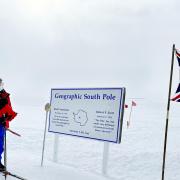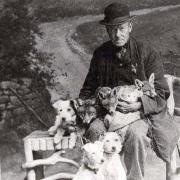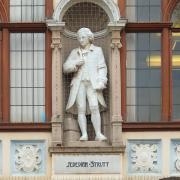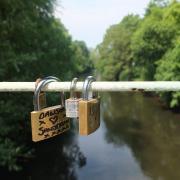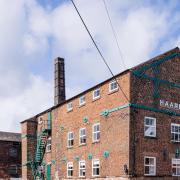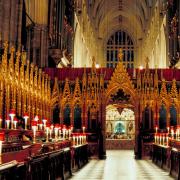Mike Smith talks to the inventor, scientist and entrepreneur

On a stormy night in October 1707, a naval task force returning home from taking part in the Siege of Toulon ran into rocks off the Isles of Scilly. The result was one of the worst disasters in British maritime history. Four ships sank and at least 1,400 lives were lost. A subsequent investigation concluded that the terrible tragedy had been caused by the inability of the ships’ navigators to calculate their position at sea with any degree of accuracy.
It was this finding that led to the passing of the Longitude Act of 1714, which carried the promise of a £20,000 prize (no less than £2.75 million in today’s money) to anyone who could come up with a means of determining the exact position of ships when they were out of sight of land.
To commemorate the 300th anniversary of the Act, the Greenwich Maritime Museum is staging ‘Ships, Clocks and Stars’, an exhibition which tells the exciting story of the race for the valuable prize. The eventual winner was John Harrison, a Yorkshire clockmaker and carpenter, who had devised a revolutionary clock with a ‘grasshopper escapement’ that was friction-free. He had even gone on to develop a ‘gridiron pendulum’ designed to nullify the effects of changes in temperature.
All of Harrison’s surviving timepieces are on show in the Greenwich exhibition, which includes a number of clocks loaned from the extensive private collection of John C Taylor, a Buxton-born inventor, scientist and entrepreneur. The most eye-catching of these is a ‘Mudge Green’ clock dating from 1779. Describing the significance of this beautiful timepiece, John said, ‘The constant force escapement developed by Thomas Mudge was an important inventive step beyond Harrison and a route to simple, more accurate chronometers.’

John has used his own powers of invention to design a unique timepiece that pays tribute to Harrison. Dubbed the ‘Chronophage’ (the time-eater), John’s clock is attached to the exterior wall of the new library he sponsored at Corpus Christi College, Cambridge, where he was once a student. Based on the novel idea of turning a Harrison clock inside out, the timepiece has an escapement that sits on top of the instrument in the form of a demonic sculpted grasshopper which opens and shuts its jaws, eating every minute so you can never get it back. The ‘clock-face’ is a gold disc with three concentric rings carrying LED lights that tell the time in hours, minutes and seconds.
John says proudly: ‘My clock is a new and inventive way of telling the time, with the seconds moving forwards by racing around the dial, pausing as the pendulum reaches the end of its swing before starting again, with time literally racing away. Initially, the fellows of the college were unconvinced by my Chronophage, but it has become Cambridge’s premier visitor attraction since it was unveiled in 2008 by Professor Stephen Hawking, who was intrigued by the concept of a clock that keeps relative time by running slow and then running fast to catch up; sometimes even stopping and then running backwards to strike.’
John inherited his capacity for innovation from his father, Eric H Taylor, who invented ‘snap-action’ thermostats to prevent over-heating in flying suits worn by airmen in the RAF during the Second World War. After the war ended, Eric founded Otter Controls in Buxton, in order to manufacture his innovative thermostats for domestic appliances and for the automotive industry. The company is still a leading supplier of controls and safety cut-outs. In 2012, it was named Exporter of the Year.
John received his early education at a Buxton preparatory school, where his dyslexia contributed to his failures in the 11-plus, 13-plus and Common Entrance. However, he did manage to pass the entrance examination for King William’s College on the Isle of Man, where the headmaster reported: ‘Taylor is practically illiterate but he did good Maths and Science papers, so I will take him.’

The headmaster’s decision was vindicated when John gained a place at Cambridge to read Natural Sciences. After graduating, he wanted to study the geology of Antarctica for a PhD, but his hopes were dashed when sponsorship for the trip was withdrawn. Very much as a second choice, he decided to join his father’s company in Buxton. According to John Fletcher, Eric’s business associate, ‘John soon revealed himself to have inherited his father’s genius for innovation.’
As a young graduate trainee, John designed a thermostat for the new cooling system for the E-Type Jaguar that allowed the radiator to be placed low down, so that the car could be given its iconic long, low nose. John says, ‘Imagine what fun I had as a 20-year-old trialling an E-Type on Porlock Hill, where I had to prove that the radiator would not boil after the car was driven flat out!’
On his father’s death in 1971, John took over as Chairman of Otter Controls, a post he relinquished five years later, when he left the Buxton plant to take over the firm’s subsidiary at Castletown, on the Isle of Man. By moving to the island, he hoped that he would be able to devote more time to bringing up his two children, for whom he had been granted custody after undergoing a divorce.
In 1981, he severed all connection with Otter Controls in Buxton after a fraught legal battle. With the help of Edwin Davies, he built up Castletown Thermostats, which he re-christened Strix, as the world’s leading designer and manufacture of temperature controls and cordless interfaces for electric kettles and other fluid-heating appliances. John invented a triple-action control that turns off a kettle when it boils, stops it from turning on when it contains no water and provides safeguards to prevent electrocution and fire hazards. The company now has manufacturing sites in the UK, Europe and China. It has won four Queen’s Awards for Industry.

Since his retirement in 1999, John has been no less enterprising and innovative. He has designed his house as a series of elliptical rooms, complete with elliptical furniture, cutlery and glassware. As well as inventing the Chronophage and sponsoring the new Corpus Library, he has given bursaries to the college’s students, established the Strix Manufacturing Centre at UMIST and enabled the Scott Polar Research Institute to purchase Scott’s personal photographs. He was awarded the OBE in 2011.
The thirst for adventure that drove John’s thwarted ambition to study geology in Antarctica has remained with him throughout his life. His interest in marine horology was prompted by his experiences as an ocean instructor for the Royal Yachting Association. And his passion for flying was sparked by his father, who was a gliding instructor at the Great Hucklow gliding club in Derbyshire.
Last year John purchased a Husky aircraft, hoping to inspire a love of flying in his grandchildren. At the age of 77, he collected the plane in Wyoming and spent 29 hours learning to fly the machine before setting off for a solo flight back to the UK. Unfortunately, the trip had to be terminated after he ran into a hailstorm that damaged the plane so badly that it was left looking as if it had been machine-gunned. Of course, this setback will not deter John from future adventures. He is even working on several inventions that are likely to add to the 200 patents he already holds. The inventor of the Corpus timepiece is clearly having the time of his life in his ‘retirement’.
The exhibition ‘Ships, Clocks and Stars’ will continue at the National Maritime Museum at Greenwich until 6th January 2015.








